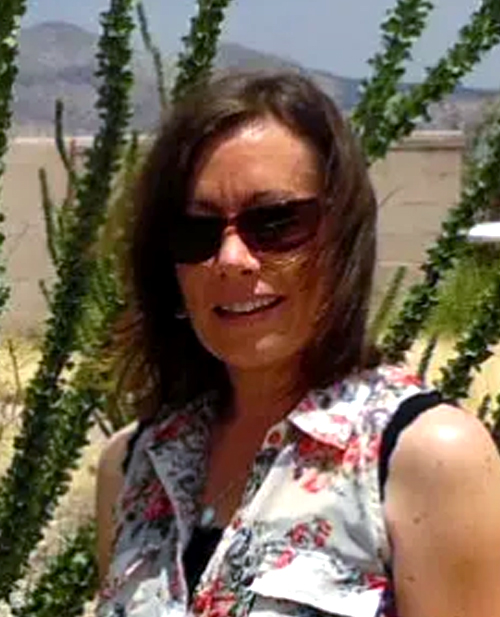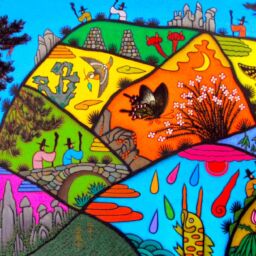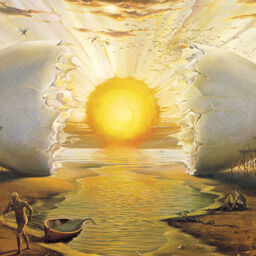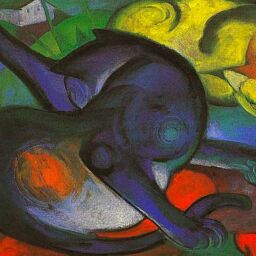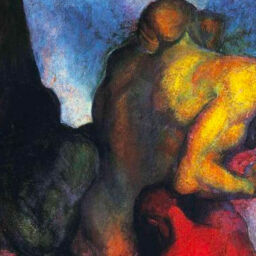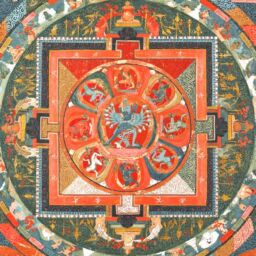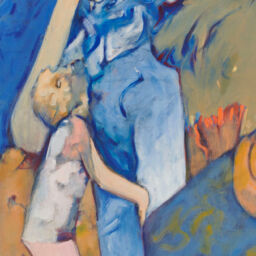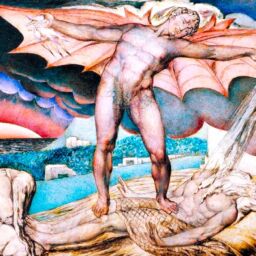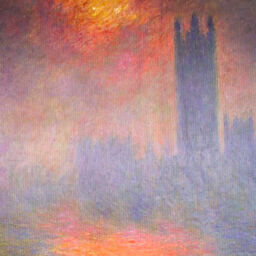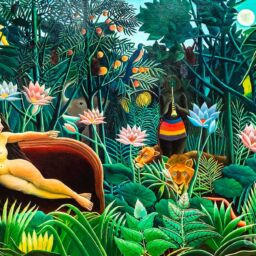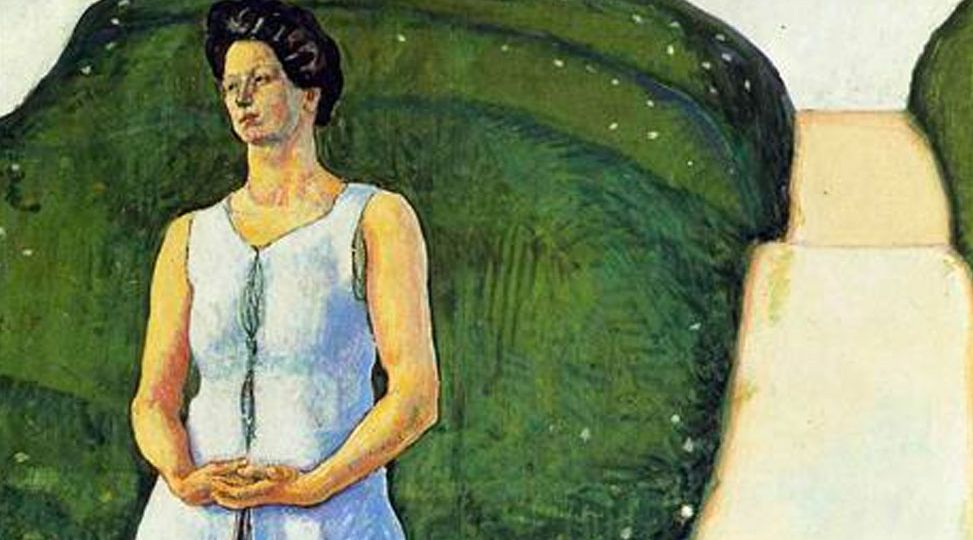
Vanishing Fingerprints
Unlikely Allies and the “Cloud of Unknowing”
Lori Green, March 19, 2020
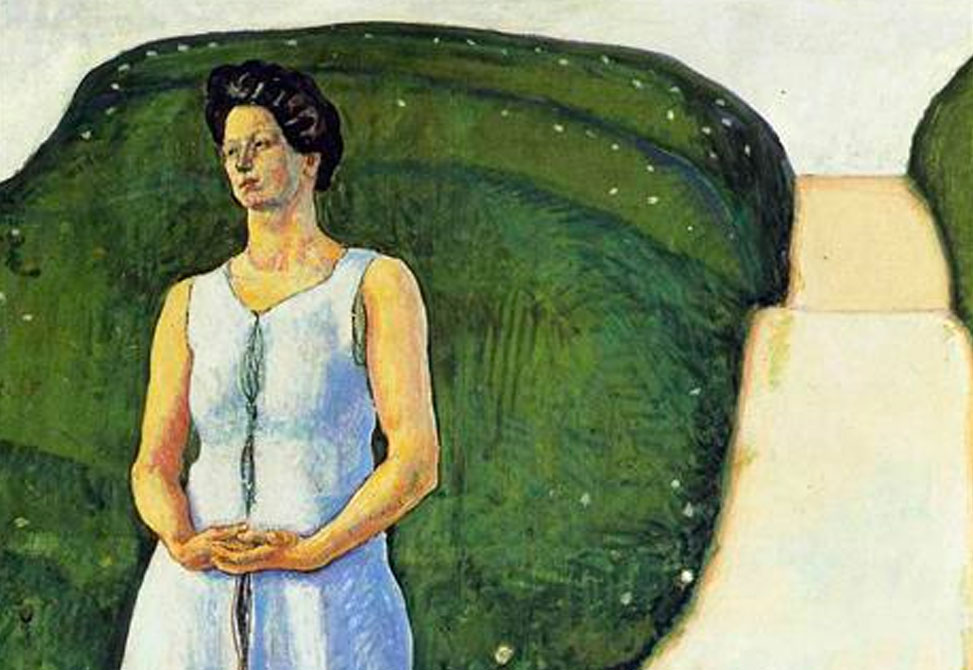 My fingerprints had vanished. I didn’t even know that this was physically possible, yet somewhere in the timeframe between successfully screening to participate in an at-risk-youth case management workshop and applying for a teaching position that unexpectedly opened up over the Christmas holiday two years later, my concrete identity had disappeared. Had I laid bricks and polished ceramic tile with my bare hands in the intervening months, inadvertently eroding my signature ridges and fissures? Not in the external world. However, I had undertaken my master’s degree in depth and archetypal psychology, so a fair amount of chipping away at rough internal edges and identities had undoubtedly taken place. Having just completed my graduate program in psychology, I knew my ultimate work scenario would likely emerge over time and even require an entrepreneurial invention of a position for my newly honed skills. But out of necessity, I needed to find work quickly, so I enthusiastically applied for the middle-school English-teaching position, only to find myself on the receiving end of the cosmic joke of disappearing digits. The hiring committee had to send my application off for long-form FBI processing, and I missed the deadline.
My fingerprints had vanished. I didn’t even know that this was physically possible, yet somewhere in the timeframe between successfully screening to participate in an at-risk-youth case management workshop and applying for a teaching position that unexpectedly opened up over the Christmas holiday two years later, my concrete identity had disappeared. Had I laid bricks and polished ceramic tile with my bare hands in the intervening months, inadvertently eroding my signature ridges and fissures? Not in the external world. However, I had undertaken my master’s degree in depth and archetypal psychology, so a fair amount of chipping away at rough internal edges and identities had undoubtedly taken place. Having just completed my graduate program in psychology, I knew my ultimate work scenario would likely emerge over time and even require an entrepreneurial invention of a position for my newly honed skills. But out of necessity, I needed to find work quickly, so I enthusiastically applied for the middle-school English-teaching position, only to find myself on the receiving end of the cosmic joke of disappearing digits. The hiring committee had to send my application off for long-form FBI processing, and I missed the deadline.
I was shocked, confused, and suddenly doubting my nature. Typically, my intuition guided me so well, and I had read the tea leaves of this potential job appearing at such an unlikely time of year as a sign. I was good at reading signs—or at least I had been. Luckily, I had the good sense to calm down and regroup: What had I learned in grad school? If I were unwilling to apply this knowledge to my personal situation when the stakes were high, what good would my guidance be when offering it to others in a professional setting?
During my graduate studies, I discovered my INFJ preference, a type readily associated with sixth-sense awareness, but one that also struggles to ground ideas and experience in the material world of sensation. The introverted intuitive (Ni) type’s penchant for navigating the waters of the unconscious, seeking symbolism, meaning, and patterns, can result in flashes of insight and even visionary perceptions about where cultural changes might (or should!) be heading. INFJs also receive lightning strikes about their own lives, and such moments, in my experience, are exhilarating. I love being an INFJ; for me, this orientation sparks and shimmers, coalescing into a cocoon of ever-emerging content that paradoxically already feels like home. I am rarely lonely. But entering “visionary” on an Indeed.com job search kicks up less-than-tangible results.
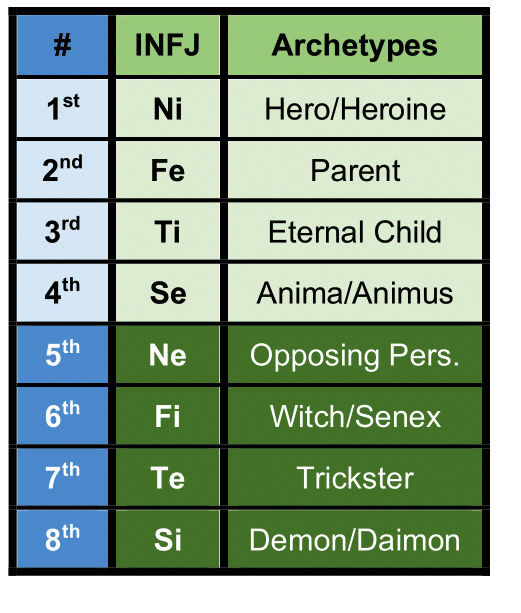 So what to do now? My life circumstances were requiring an important and, at times, uncomfortable shift in roles as I entered the gladiator arena of sensation occupied by both my inferior function of extraverted sensation (Se) and my demonic/daimonic introverted sensation (Si). I no longer had the financial cushion of a student loan and was now faced with the reality of repayments and providing for my two children. Was I willing to apply at Home Depot until work more in alignment with my strengths came along? Absolutely, but I also felt like I would be failing a more significant test if I were to accept such a position. INFJs have a fierce independent streak and often dismiss conventional wisdom. To paraphrase Jung, I had created an impossible situation for myself, but such dilemmas are what pitch us into the unnerving, opaque territory of the lower functions.
So what to do now? My life circumstances were requiring an important and, at times, uncomfortable shift in roles as I entered the gladiator arena of sensation occupied by both my inferior function of extraverted sensation (Se) and my demonic/daimonic introverted sensation (Si). I no longer had the financial cushion of a student loan and was now faced with the reality of repayments and providing for my two children. Was I willing to apply at Home Depot until work more in alignment with my strengths came along? Absolutely, but I also felt like I would be failing a more significant test if I were to accept such a position. INFJs have a fierce independent streak and often dismiss conventional wisdom. To paraphrase Jung, I had created an impossible situation for myself, but such dilemmas are what pitch us into the unnerving, opaque territory of the lower functions.
I deeply valued that I was supposed to be using my gifts in service to others. However, my confidence in both my introverted and extraverted sensation, the very functions I needed to become a more effective navigator of the material world, could neither be faked nor rushed, so I returned to my training and rediscovered Marie-Louise von Franz’s (1979/1997) lectures on alchemy. She referenced the medieval mystical text The Cloud of Unknowing, which offered spiritual exercises to prepare seekers for an encounter with the divine. Von Franz elaborated:
The cloud within the world of Christian mysticism implied that as one got closer and closer to the divine light through meditation, spiritual exercises, humility, and docility, ultimately the light of God appeared, not as a big illumination, but as a darkening of the human light and an experience of darkness and confusion. (p. 113)
Von Franz added that “Jung has compiled a collection [in Aion] that describes the North Pole as a seat of constant lack of sun and cloudiness” (p. 113), and she further characterized the murky nature of the evolving individuation path:
In practice it corresponds to an experience that people do not like to accept, but to which Jung has again and again referred: namely, that with increasing progress in the process of individuation, the deeper and closer people get to the Self within themselves, the more confused and complicated the situation becomes. It does not become easier. (1979/1997, p. 113)
While I was not so heady as to assume I was approaching the archetype of the Self, I did know I was making progress. Realizing anew that increasing confusion is the way of things, I was able to quiet my internal resistance long enough to discern what soulful action in the external world might look like. The test at hand required that I set aside conventional wisdom (“Get a job! Any job!”) in favor of the imaginal approach to problem solving. For me, this amounted to holding the tension of the opposites while accessing a pleasurable practice that worked my underdeveloped sensing functions.
In the frigid Wyoming winter in which I found myself, I naturally longed for warmth and ease of movement, not the reflexive clenching of muscles against the cold; the YMCA pool was as close as I could get. I decided to create a daily meditative ritual out of a late-afternoon journey to the Y, only a few blocks from my house. The rules were simple: I would assist my function integration and psychological stretch by enveloping myself in sensory experience, and I would, for the 45 minutes in which I swam, only allow positive—or at least neutral—thoughts to accompany me.
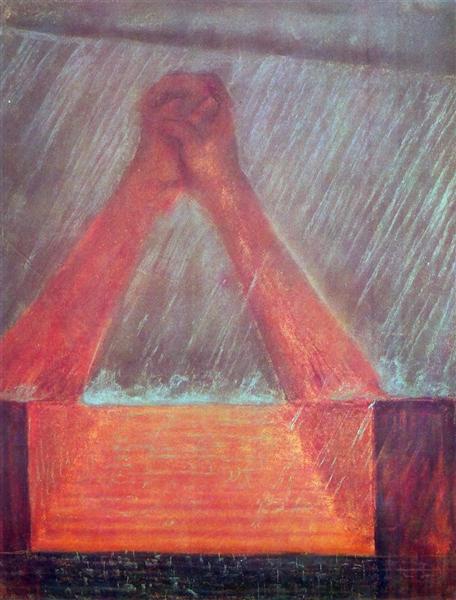 I braved the sub-zero temperatures, hugging my coat in around my body as my boots crunched through the crusty snow. My resolve not to worry during this brief interlude was at first countered by increased disaster chatter: “You are irresponsible! You’re going to have to borrow money from your parents!” But I pressed onward, feeling the bite of the unforgiving weather, doing my best to detach from the icy thought-tendrils of despair.
I braved the sub-zero temperatures, hugging my coat in around my body as my boots crunched through the crusty snow. My resolve not to worry during this brief interlude was at first countered by increased disaster chatter: “You are irresponsible! You’re going to have to borrow money from your parents!” But I pressed onward, feeling the bite of the unforgiving weather, doing my best to detach from the icy thought-tendrils of despair.
Inside the Y, I immediately noticed the humid rush of prickly, chlorine-tinged air as it jerked my mind back into the present moment. Peeling off my layers and scurrying through the shower, I plunged into the lap pool, welcoming the hush of underwater nothingness as my limbs slowly eased into the pull, swing, and glide of the butterfly stroke. It only took a few moments for sensory intelligence to work its magic, and I felt myself relax, enjoying the buoyancy of the water surrounding and supporting me as I slipped through its medium. Bit by bit, my discipline of mind neutrality began to uptick into stirrings of possibility.
A few days into this routine, I perceived a growing confidence. No external circumstances had shifted, but I somehow felt better. And then I suddenly noticed all the bright, beautiful one-inch tiles lining the pool. How had I not seen them before? Each of these little cobalt blue squares bore witness to my laps through the water. I decided, in the spirit of play, to imagine that every one of these tiny tiles represented $5000. For the time in which I swam, I engaged this unexpected image and allowed myself to bathe in the luxury of its abundance. Why not? I literally had nothing to lose.
As I glided by the tiles, I envisioned them winking their encouragement. My INFJ vision easily saw this. Thus emboldened, I upped the ante and visualized paying off my credit card balance and upgrading my car; with each tile representing $5000, it hardly took any squares to achieve my imaginal feat. This made me smile. I increasingly felt a sense of wholeness and uncanny expectancy. My pool ritual was changing me by elevating my psychological state. Whatever choice I would need to make regarding work, I began to trust that the right next move would feel like I felt swimming laps: at ease, in an ocean of support, awash in flickering blue tiles of plenty. Depth psychology devotees often proclaim that one should “hold an image,” advice which can be difficult to grasp, let alone put into practice. But suddenly, amidst an enjoyable activity that employed my lesser-developed functions, an image had found me.
And then the phone call came.
Even as I write this, I relive the wave of astonishment I experienced as I processed the news that a third party was offering to intervene in an unresolved legal matter that had been lingering for months. This individual wanted to buy both the co-owner and myself out of a property I no longer had any interest in maintaining. Because the court had already awarded me a decision, the bottom line was that the entire amount of the proposed buyout would go to me, in the form of a check for thousands of dollars (over a dozen blue tiles), in one week.
By remaining faithful to my Ni sensibilities yet stretching the muscle of my lesser-used sensory functions, I was granted not only an extraordinary image with which to commune but also the swift, miraculous answer to my impossible situation. The financial windfall allowed me the freedom to create a website, virtual school, and workshops that offer courses in dreams, archetypes, and practical skills for working with images for those new to depth psychology.
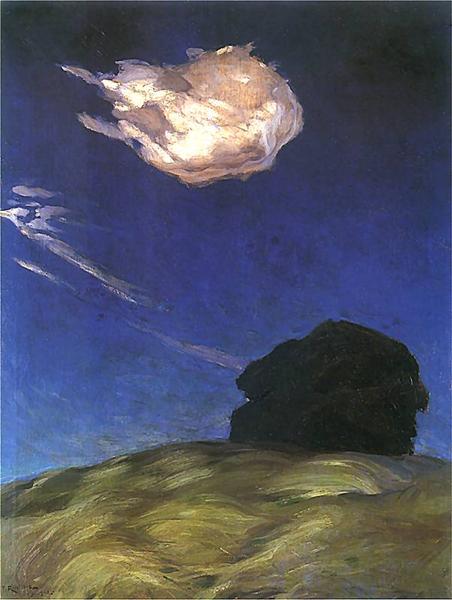 Now, three years after my image-immersion baptism, I am once again being challenged to trust the psyche as I journey deeper into the mystery. As before, the terrain is familiar in that I am at a crossroads with career decisions, and I recently moved from Wyoming to North Carolina in bold response to an inner muse. The stakes are higher, the distances greater, and I’m seeking to penetrate, or at least learn from, an even denser “cloud of unknowing” (Griffin, 2004). As if in reply to my internal perception of veils and mist, the psyche immediately provided a concrete example of this unreality when, in November of 2019, I found myself holding a copy of The Quantum Revelation: A Radical Synthesis of Science and Spirituality by Paul Levy (2018). I don’t even remember picking the book up off the shelf in my local bookstore, but I recall staring down at its cover and scanning the author bio. It described Levy as a former economics researcher for Princeton University who experienced a life-altering trauma that subsequently sent him along a dual course of study: Tibetan Buddhism and quantum physics. I was shocked as I read of Levy’s intense interest in the work of Jung and how he managed the C. G. Jung Foundation Book Service in New York in 1988. It all began to make a certain “unknowing” sense; within my hands, I held a Jung enthusiast’s exploration of the psychological significance of the quantum field. Given the paradigm-altering nature of quantum discoveries, what greater cloud of unknowing could there be? And the book, a rather uncanny image, had quite literally found me.
Now, three years after my image-immersion baptism, I am once again being challenged to trust the psyche as I journey deeper into the mystery. As before, the terrain is familiar in that I am at a crossroads with career decisions, and I recently moved from Wyoming to North Carolina in bold response to an inner muse. The stakes are higher, the distances greater, and I’m seeking to penetrate, or at least learn from, an even denser “cloud of unknowing” (Griffin, 2004). As if in reply to my internal perception of veils and mist, the psyche immediately provided a concrete example of this unreality when, in November of 2019, I found myself holding a copy of The Quantum Revelation: A Radical Synthesis of Science and Spirituality by Paul Levy (2018). I don’t even remember picking the book up off the shelf in my local bookstore, but I recall staring down at its cover and scanning the author bio. It described Levy as a former economics researcher for Princeton University who experienced a life-altering trauma that subsequently sent him along a dual course of study: Tibetan Buddhism and quantum physics. I was shocked as I read of Levy’s intense interest in the work of Jung and how he managed the C. G. Jung Foundation Book Service in New York in 1988. It all began to make a certain “unknowing” sense; within my hands, I held a Jung enthusiast’s exploration of the psychological significance of the quantum field. Given the paradigm-altering nature of quantum discoveries, what greater cloud of unknowing could there be? And the book, a rather uncanny image, had quite literally found me.
I cleared time from my schedule to read Levy’s text, readily appreciating his gift for making such difficult material accessible in layperson’s terms. I am not understating matters to say I am forever changed; there was my life before this book, and there is my life now. I’ve experienced actual physical reactions to the quantum implications set forth, and overwhelmingly, the sensations have been positive: tears of joy and relief, a pervading sense of emotional calm that “everything’s going to be okay,” increased mental clarity. I’ve also experienced occasional moments of “panic,” although this feels too strong—rather, I encountered what I can only call a sort of belief vertigo. Even in these moments of discomfort, a quiet, steady part of my mind reasoned that this was a normal response to discarding centuries-old collective assumptions about the Newtonian/Cartesian/physical properties of matter.
The text made a startling case for the ways in which our nighttime dreams, waking “reality” dreams, and quantum dreams all interact with each other. Levy (2018) quoted extensively from Einstein, celebrated American theoretical physicist John Wheeler, Nobel Laureate Wolfgang Pauli, and Jung, among others, as he explored the questions of how humans are participating in creating our experience of reality and what such discoveries mean in both psychological and practical terms. Using Jung’s terminology, Levy explained that “quantum physics widened the threesome of classical physics—space, time, and causality—to include … synchronicity [emphasis added], thereby making it a foursome” (p. 192). Jung himself, in his 1953 correspondence with Pauli, wrote:
It means a lot to me to see how our points of view are getting closer, for if you feel isolated from your contemporaries when grappling with the unconscious, it is also the same with me, in fact more so, since I am actually standing in the isolated area, striving somehow to bridge the gap that separates me from the others. After all, it is no pleasure for me always to be regarded as esoteric. Oddly enough, the problem is still the same 2,000-year-old one: How does one get from Three to Four? (2001, p. 129)
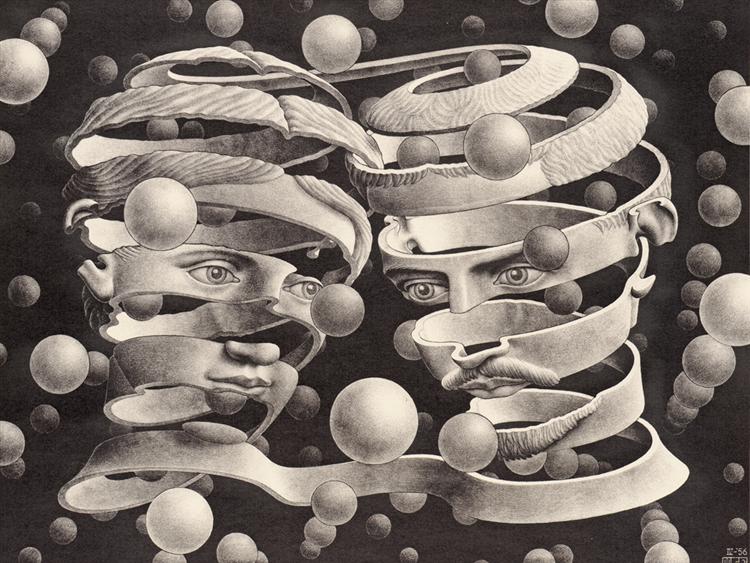 I draw comfort from knowing that such celebrated minds endured their fair share of confusion and even doubt while traveling the borderlands. In my own experience, I often discover that essential “muscles” are developed during such times, even though I can’t comprehend the psychological relevance of this musculature until later. Quantum contemplation is highly paradoxical, and centers of gravity and belief shift in surprising ways, realigning one’s old assumptions. For example, I’m coming to accept that the conventional adage “You’ll believe it when you see it” is a lie. In the quantum field, “You’ll see it when you believe it” is the shocking, liberating rule of thumb.
I draw comfort from knowing that such celebrated minds endured their fair share of confusion and even doubt while traveling the borderlands. In my own experience, I often discover that essential “muscles” are developed during such times, even though I can’t comprehend the psychological relevance of this musculature until later. Quantum contemplation is highly paradoxical, and centers of gravity and belief shift in surprising ways, realigning one’s old assumptions. For example, I’m coming to accept that the conventional adage “You’ll believe it when you see it” is a lie. In the quantum field, “You’ll see it when you believe it” is the shocking, liberating rule of thumb.
What does all this mean for this INFJ? I’m still sorting it out, but I know I want to “teach what I most need to learn,” as the saying goes. Indeed, I’m presently creating a series of online courses inspired by The Quantum Revelation, my own depth psychological perspectives, and the visual imagery of Alice in Wonderland. Grounding this creation process in pleasurable, sensory experience, I know, will be key to both my successful integration of the material and its eventual helpfulness to others. In a way, I’m now just swimming in a much larger pool, but the same guiding practice promises to carry me through.
As I revisit the symbolism of my vanishing fingerprints, I am gobsmacked by the significance of this image. If, as Levy suggested, we are being challenged to reimagine our default adherence to the concrete, material world, to press ever forward into the mysteries and implications of conscious co-creation with the unified field, then undoubtedly, our former identities will be called into question. Perhaps even more unnervingly, the concept of time itself will be radically called into question. I am still a very human woman in a very Newtonian world, except when I’m not. Parts of me, just like my fingerprints, are now refusing to be captured by conventional means, be they high-tech digital scans or fossilized thoughts, collective beliefs, and limiting emotional patterns. As for individuation, we each have the unlikely yet mighty assistance of our less-conscious functions to guide us in our ever-expanding endeavors to touch the Self beyond the cloud of unknowing.
References
Griffin, E. (Ed.). (2004). The cloud of unknowing. HarperOne. (Original work published ca. late 1300s)
Jung, C. G. & Pauli, W. (2001). Atom and archetype: The Pauli/Jung letters, 1932-1958 (C. A. Meier, Ed.) (D. Roscoe, Trans.). Princeton University Press.
Levy, P. (2018). The quantum revelation: A radical synthesis of science and spirituality. SelectBooks.
von Franz, M.-L. (1997). Alchemical active imagination (Rev. ed.). Shambhala Press. (Original work published 1979)
Images
Ciurlionis, M. (1904). Deluge. Retrieved from wikiart.org
Escher, M. C. (1956). Bond of union. Retrieved from wikiart.org
Hodler, F. (n.d.). Silence of the evening. Retrieved from wikiart.org
Ruszczyc, F. (1902). Obłok. Retrieved from wikiart.org


